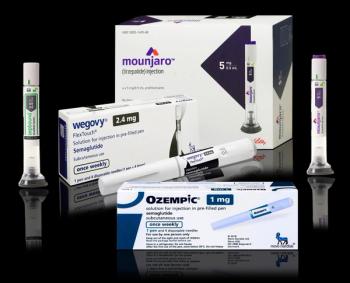
Costs of medical care a concern at national and kitchen table levels
House lawmakers resume banging the drum for health care price transparency.
What do American patients want? Health care price transparency.
When do they want it? Now!
When will they get it? To be determined …
On Jan. 31, members of the U.S. House of Representatives vowed to continue in 2024 the quest from 2023 to
Lawmakers speak out
The end of 2023 included a bright spot: bipartisan passage of the bill known known as House Resolution 5378, the
“The legislation will empower patients providers and payers by advancing
Subcommittee Ranking Member Rep. Anna Eshoo (D-California) said she hopes the Senate approves that act quickly. “Now Senate and quickly is an oxymoron, but we can still hope,” she quipped, and even if the Senate did, Congress’ job is not over.
The hearing came a day before the U.S. Centers for Medicare & Medicaid Services opens negotiations on the most popular
More than 60% of Americans are living paycheck to paycheck, meaning they are one medical bill away from a financial emergency, said Energy & Commerce Committee Chair Cathy McMorris Rodgers (R-Washington). She described a scenario in which a new mother with a good health care plan, a month after giving birth, received hospital bills for $18,000, $6,000, then $1,800, with little clear explanation about why costs were covered, or not.
She also demanded the Congress get the “Lower Costs, More Transparency Act,” to the president’s desk as soon as possible.
Last week, CMS announced a record 21.3 million people signed up for health care coverage through the Affordable Care Act Marketplaces, said Committee Ranking Member Rep. Frank Pallone (D-New Jersey).
Yet affordability continues to be a challenge, with 40% of American adults saying they have delayed or forgone medical care because of high costs in a system too complex and challenging, Pallone said. In an example of care, he noted a study that found the average price of an MRI ranged from $250 to more than $1,400 across different geographical regions.
Unequal payment
For medical services, prices paid by employer-sponsored insurance are routinely multiples higher than rates reimbursed by Medicare. The Medicare rate should serve as a useful benchmark because the same service should cost roughly the same regardless of the patient receiving it, said Katie Martin, MPA, president and CEO of the
Hospital markets are highly or very highly concentrated in more than 76% of more than 180 metro areas around the country, which stifles competition. Meanwhile, costs of at least 46 services in hospital outpatient departments are higher than the same services provided in physician offices, Martin said.
No one – patients, health care providers, lawmakers – can make good decisions with incomplete information.
“Although transparency alone likely is not sufficient to lower health care spending, more complete data, including on health care prices, can be used by employers, researchers, and policymakers to understand the drivers of health system costs and to design and implement strategies to lower cost growth, improve the value of health care spending, and increase the affordability of health care services,” Martin said.
Market conditions
Benedic Ippolito, PhD, senior fellow at the
“Health care ought to have those same market forces. If providers are equal to offer the same quality service for a lower price, purchasers ought to shift towards those settings,” he said.
That does not hold true in health care. When Medicare pays more for services in hospitals than physicians’ offices, it directly increases the cost of Medicare to beneficiaries while creating incentives for hospitals to acquire physicians’ offices, he said.
Hospital leaders argue such site-neutral payment would hurt their financial viability. Even if it does threaten finances of all hospitals, that does not justify paying all hospitals more. A better approach would be to use site-neutral payment as the standard, then mitigate revenue losses for certain hospitals that are more financially distressed, Ippolito said.
Rebuilding public trust
Police officers have grown accustomed to body cameras and rigorous public scrutiny to use transparency to build public trust. The opposite is true with many hospitals, insurers, third-party administrators and pharmacy benefit managers (PBMs), said Kevin Lyons, a retired law enforcement officer and member benefits director for the
Health care “is one of the least transparent, most shrouded aspects of our society – despite the fact it comprises one-fifth of our economy,” he said.
Along with patients, physicians, nurses and support staff often are victims of lack of transparency, Lyons said. A local school board member, Lyons said he can tell budget details about art supplies to transportation, but little or nothing about cost increases of health care.
“We fly blind and are expected to accept it, to protect what: the business interests of carriers, hospitals and PBMs?” he said.
‘A national scandal’
“Every American knows that we pay too much for the quality of health care that we get,” said Sophia Tripoli, MPH, senior director of health policy for
Tripoli cited a number of figures about high costs and poor outcomes for Americans, if they don’t put off health care due to cost.
She offered another anecdote about a Colorado mother whose son was referred to a hospital for an evaluation for speech therapy. At the height of the COVID-19 pandemic, they had a video conference with a panel of specialists who watched the boy speak, play and eat.
The bill: $700 for a one-hour appointment, then another for almost $1,000 for a hospital facility fee, even though the mother and son never set foot inside the hospital.
“This is a national scandal,” Tripoli said.
The subcommittee also heard testimony from Chapin White, director of health analysis for the Congressional Budget Office (CBO). He described figures about how federal subsidies for health insurance affect the federal budget. White did not offer any recommendations, in keeping with CBO’s mandate to provide objective, impartial analysis.
Newsletter
Stay informed and empowered with Medical Economics enewsletter, delivering expert insights, financial strategies, practice management tips and technology trends — tailored for today’s physicians.



















